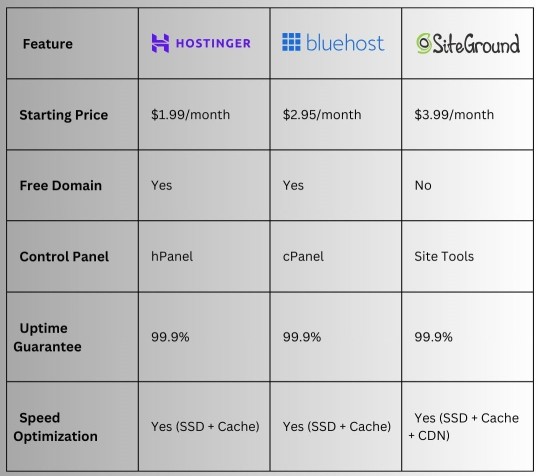#installer site wordpress
Explore tagged Tumblr posts
Text
Créer un Blog WordPress en Quelques Minutes : Le Guide Complet
La création d’un blog est une excellente manière de partager vos passions, vos connaissances et vos expériences avec un public en ligne. WordPress se présente comme la plateforme idéale pour réaliser cette ambition. Dans cet article, nous vous guiderons étape par étape pour créer rapidement et aisément votre propre blog WordPress. Vous constaterez que la mise en place de votre blog ne demande que…

View On WordPress
#création de site wordpress#création site internet wordpress#création site web wordpress#création site wordpress#créer site internet wordpress#créer site wordpress#créer un blog wordpress#créer un site avec wordpress#créer un site internet wordpress#créer un site sur wordpress#créer un site web avec wordpress#créer un site wordpress#faire un site wordpress#formation wordpress#installer site wordpress#installer wordpress#site web professionnel#utiliser wordpress#wordpress créer un site
0 notes
Text
How to Create a WordPress Website Using ChatGPT (Step-by-Step Guide)
Hello, friends! 😊 Are you looking to create a WordPress website but don’t know where to start? Don’t worry! In this article, we’ll walk you through the step-by-step process of setting up your website, from choosing a hosting provider to designing and optimizing it using ChatGPT. Let’s get started Step 1: Choose a Hosting Provider & Domain Name To launch a website, you need a hosting provider and…
#blogging#ChatGPT for WordPress#create WordPress site#digital marketing#eCommerce website#install WordPress#SEO optimization#web development#Website Customization#website design#WooCommerce#WordPress Hosting#WordPress plugins#WordPress Themes#WordPress tutorial#WordPress website
0 notes
Text
How to Install Plugins on WordPress Site | With Screenshots

Installing plugins on a WordPress site is a simple way to enhance your site’s features and functionality. Plugins can help you add contact forms, improve security, or boost SEO without requiring any coding knowledge. This guide will provide clear, step-by-step instructions with pictures on how to install plugins on WordPress.
WordPress offers over 60,000 plugins, likely exceeding 70,000 due to many available on third-party sites
Why Add Plugins to Your WordPress Site?
Think of plugins as apps for your WordPress site. They add new features and make your site more useful for visitors. Thousands of free and paid plugins are available, so you can find one to meet nearly any need.
Step-by-Step Guide to Install Plugins on WordPress
You can install plugins on WordPress using the following methods. Let’s take a look at the screenshot. (Continue)
#seo#wordpress#content marketing#marketing#WordPress#WordPress Plugins#Add Plugins to WordPress#Install Plugins on WordPress#Plugin Installation#WordPress for Beginners#WordPress Guide#WordPress Plugin Guide#WordPress Site Setup#WordPress Tutorial
0 notes
Text
youtube
#cloudways wordpress tutorial#cloudways wordpress staging#cloudways wordpress file manager#how to migrate wordpress site to cloudways#cloudways multisite wordpress#cloudways wordpress review#how to install wordpress in cloudways#cloudways digitalocean wordpress#cloudways server setup#cloudways clone server#cloudways deals 2023#cloudways autonomous review#cloudways digitalocean vs vultr#cloudways vps#Youtube
0 notes
Text
#free_tech_simu#freetech#simu#simu akter#freelancer simu#Remove WordPress installation#Uninstall WordPress#Delete WordPress website#Remove WordPress completely#Delete WordPress#Clear WordPress data#Erase WordPress site#WordPress site removal#Remove WordPre
0 notes
Text
My dad runs a website that he inherited from another guy and something went wrong this week and the site is redirecting to an AI porn chatbot site so I've been tapped as the only one in the family with any wordpress admin experience to fix this problem.
The site has a bunch of inactive admins who nonetheless still have admin privileges, is running on a version of PHP that hasn't had support in two years, and, most maddeningly, had about 35 plugins installed.
I'm fixing this and rooting out the malware redirecting the site, but I took a photo of the most bugfuck plugin that I knew Tumblr would appreciate:



2K notes
·
View notes
Note
Hi!! I wanted to say that I loved reading about your journey of creating a personal website. I'm still unsure between Vercel and Netlify. I have a small question to ask. See, one of the reasons I want to make a website is to archive drawings and journal/sketchbook. Would you have any tips for creating an area on my website just for the diary/journal, which has tags, files for each entry, etc.?
Bello!

Really happy to hear about your interest in websites! I want everyone to make their own site so I don't have to log into social media and get instant tummyaches ♥
Vercel vs Netlify: I think I settled on Vercel for absolutely no reason whatsoever. I just made a site on Netlify, then tested on Vercel, and now I have like 5 websites on Vercel so I just kept using it LOL. I'm sure a more tech-savvy person would know the difference - I think they have certain integrations with specific programs.
Creating a diary or journal with tags:
There's a couple of different ways you can do that, with different levels of work needed.
you got me yapping again:
This sadgrl tutorial might be outdated and may or may not work, but explains the process better than I can.
Easiest: make a journal on Dreamwidth, or another blogging site (wordpress??) that allows easy tags and RSS feed, and embed that RSS feed onto your site.
This requires almost no HTML set-up, and the easiest to organize tags, but you don't truly have the data on your own site since it's just embedded.
When I snuck into a web design class at college, this was one of the methods that the professor used for a blog within a portfolio site LOL.
Shit like wordpress is what a LOT of ~professional~ sites do for their blog section. They code it separately from the main site haha. It's the most popular thing, but not necessarily the best. And wait til you read on what the CEO of wordpress has been having meltdowns about... he owns tumblr too!
It's made with a tutorial for Neocities if that's what you use.
Medium: Set up zonelets.
It will require some HTML and JS editing, but will help automate making headers/footers for each page of a blog.
I've never used it myself, but I see other people speak highly of it.
HARD FOR ME CUZ I'M A GORILLA: I believe a lot of professional web devs will slap your face with their coding cock until you use a static site generator (SSG) to make your site.
You will need some coding knowledge to set up the tagging system since it doesn't come with it enabled by default. But it's made explicitly to be an alternative to big Static Site Generators which are...
It requires some more intimidating knowledge, because it's a lot of scripts that turn files that are not HTML/CSS/JS into plain HTML.
Also you have to use the command line, and that doesn't come with buttons that tell you what you can do. You have to copy/paste all that shit or memorize the code to 'dev build astro' and it all looks silly.
I've used Eleventy, and now am using Astro. Other people use Hugo or Jekyll or some other stuff with crazy names like Glup Shitto. I hate all these sites cuz none of the words mean anything to me. This is a common theme for me and tech. I don't know what NODES or CONTENT or ISLANDS are!!!
I had the most success attempting to learn how to use a SSG by downloading a template and altering it with github + VScodium. Here's the template page for Astro. You click on a theme you like, and it takes you to its github page. (If you don't want to use evil Microsoft stuff sorry. Skip this entire section.) Follow the instructions on the page for "forking" the glup shitto. When it tells you to run commands, I run those commands through the terminal window in VScodium. These tutorials never tell you what these commands do cuz they assume you already know. Usually those commands automatically install the files you need onto your computer, and create the final files.
You can see my wip here for a "tag system" that SHOULD show members of a web listing haha but I don't know what I'm doing and I have a reading disorder AND don't know cumputer good.
THEORETICALLY this will be the simplest and easiest way to maintain tags and files, because after you set it up you just have to write the "content" of the blog page. And you don't have to set up the header/footer ever again. I see the vision, and potential, but I am not there yet when it takes me 5 hours a day to figure out what any of the words in the documentation mean and I don't want to ask an actual tech person cuz they will be like 'obviously just press the Blip on the Repository and then Suck My Ass in the command line".
(side note I haven't updated fujofans in like a year cuz I'm struggling with this part to make updating easier).
Con: the final HTML/CSS code is really ugly if it's "minified", and a lot of themes use """"""professional"""""" CSS libraries like Bootstrap and Tailwind that I honestly think are ugly cuz that's what every fuckin' tech website uses to style their pages and make them look Professional and Minimalist with stupid code like style="500-w dark-gray-balls D-cup-bra" on every single element. Even Toyhouse uses Bootstrap. Eugh!
But maybe you're smarter than me and can wrangle these things better!
That was really long. Woops. I hope you can slug through this wall of text and find something helpful. Feel free to email me if you have any more specific questions. I may or may not be helpful.
If someone else sees this and has better suggestions for making BLOGS, please chime in. I'm begging you.
62 notes
·
View notes
Note
Hello! I couldn't find where to message you and felt silly to email the question on your business email, so you're absolutely free to ignore this!
Love your comic so so much, your characters are wonderful! As someone who also wants to make a webcomic (traditionally, not like webtoon or tapas or any scrolly place), how did you get your website made up and hosted? I'm always stuck on the details of that stuff. Making the art isn't hard, it's the technical details that I'm too boomer to understand!
Apologies if it's such a weird or awkward question, but thank you for reading nonetheless!
Not a weird question at all, I feel like with large social media platforms being the main places where people post their work, the art of making your own website is truly lost in this day and age (I know I had to fumble a bit to make mine)
I use Bluehost to host my site, and used Wordpress's open source website builder for it. I highly recommend checking out Toocheke, which is pretty much what I used for the framework for my site. I am not a tech savy person (most of my css knowledge was editing my own tumblr back in the day), but toocheke was fairly easy to install and I was able to get most of my problems fixed by light researching.
I would highly advise against trying to make your website on wordpress itself, for some reason toocheke costed more to use since they put custom themes like that behind a paywall on their own built in builder if you decide to host with them.
22 notes
·
View notes
Note
Hi! I juuust found your work, and I like it (namely through that formatting post, but now I'm actually reading through CURSE/KISS/CUTE and, hey! It is cute! Aster's growing on me)!
I'm actually in the process of writing another book—er, webnovel. Something free because I want people to have the chance to actually invest themselves in it—and I wanted to ask! Did you code the site all yourself, or did you use something as a framework? And, to someone who doesn't know much code, what would you reccomend?
Asters are always growing in odd places ...
I coded the whole entire thing myself. I even coded a ton of backend tools that live on my computer for automating tasks like formatting pages and converting images. I did all of this because I’m a freak...? And I wanted to optimize for fast, lightweight page loads with no server-side rendering. (The entire website is static HTML.)
For someone less inclined to hubris than me, depending on your skill level or interest in learning web code I would recommend either:
just using Wordpress (every web host in existance has a big glowing button labeled “install wordpress” for making a wordpress site and there are endless templates for formatting any kind of post you can imagine with no coding required), or
picking a static site generator and using that (for a fast and lightweight website but one that you might have to do a little coding to finish out the way you like it).
Notably, one thing I don’t recommend is using SquareSpace. For one thing, they have an adult content ban on the books; for another, if you ever do want to do something as basic with your website as “upload an HTML page you coded yourself”, you’ll find yourself locked out in the cold, because that’s grown-up stuff and they don’t like you doing that. (Learning this the hard way is the reason I ended up making my new website myself. A nice thing about a static site is that not only do you have complete control, but it’s fully portable, too: just paste the files into whatever web host you like and it’ll work just the same.*)
*except sometimes you gotta configure your .htaccess a bit etc
25 notes
·
View notes
Note
I'm sorry if this is a very silly question, but I've been jabbing angrily at my wordpress install for a bit and can't find the answer - how did you set up the post subscribe system you have? Is it a plugin or are you using a wordpress.com site with your own url?
Yeah it's a wordpress.com site, I don't know computers well enough to create a real website. Wordpress.com gives you a bunch of widgets you can put in your sidebar and one of them is a Subscribe button.
38 notes
·
View notes
Text

So Matt Mullenweg has decided that if you’re a host he’s threatened by, he will pull the plug on your access to WordPress.org’s resources. So none of your users (who are just trying to host their websites, by the way) can install any security updates or add new plugins or themes.
I have absolutely zero desire to touch anything hosted by Automattic. The Jetpack plugin is abysmal. WordPress.com is the worst possible way to host a WordPress site. Matt Mullenweg being hostile towards a major host that people are happy with is pretty scary. Are we all gonna need to eventually fall in line and pay Automattic if we don’t want the CEO to aggressively break functionality of our sites?
7 notes
·
View notes
Text
Why Choose an Affordable Web Hosting Service

Affordable web hosting services are ideal for anyone looking to create a website without spending too much. Whether you’re a small business owner, a blogger, or starting an online store, choosing an affordable web hosting plan ensures you get the features you need without breaking the bank.
Cost-Effective
Affordable web hosting plans are budget-friendly, making them perfect for beginners or small businesses. They allow you to launch your website without a huge investment, giving you more financial flexibility to focus on other areas like design, marketing, or content creation.
Reliable Performance
Even affordable web hosting provider offers reliable performance. Many include features like fast loading speeds, SSD storage, and high uptime guarantees to keep your website running smoothly. This ensures your visitors have a positive experience whenever they visit your site.
Easy to Use
Most affordable web hosting plans come with simple tools like user-friendly control panels and one-click installers for platforms like WordPress. These features make it easy to set up and manage your website, even if you’re not tech-savvy.
Security Included
Basic security features like SSL certificates, malware protection, and regular backups are often included in affordable web hosting packages. This ensures your website and customer data remain safe without extra costs.
Room to Grow
Affordable web hosting service is scalable, allowing you to start with a basic plan and upgrade as your website grows. This flexibility is ideal for websites expecting increased traffic in the future.
Conclusion
Choosing an affordable web hosting service is a smart way to get your website online while staying within your budget. It provides the essential features, performance, and security you need, making it a great option for individuals and small businesses. Start building your online presence today!
3 notes
·
View notes
Note
If it's not TMI, can I ask how much you pay a month to host the site? And if you'd have to pay more if you got a sudden boost in traffic?
I use https://phpwebhosting.com/
Ten bucks a month plus a renewal fee every year for SSL. They are very responsive to concerns, have a pretty good uptime, but their backend is super basic. They don't have the fancy control panel that a lot of bigger hosts offer, the ones that'll install Wordpress for you and do your taxes. Bandwidth and disk space are such nonissues these days, you do not need to pay a lot for your host if you're just doing a webcomic.
They won't charge a lot for a sudden boost either, but I do remember years ago when the comic was linked on imgur that the sudden traffic mimicked a DDoS attack, and the server went down. I had to contact them to assure them everything was fine.
Indie webcomics generally just don't have that kind of traffic anymore though. You don't need anything fancy or super robust.
Also my new favourite petty thing is to differentiate self-hosted comics from the comics on Webtoons and the like by calling us indie.
39 notes
·
View notes
Text
How to Block AI Bots from Scraping Your Website
The Silmarillion Writers' Guild just recently opened its draft AI policy for comment, and one thing people wanted was for us, if possible, to block AI bots from scraping the SWG website. Twelve hours ago, I had no idea if it was possible! But I spent a few hours today researching the subject, and the SWG site is now much more locked down against AI bots than it was this time yesterday.
I know I am not the only person with a website or blog or portfolio online that doesn't want their content being used to train AI. So I thought I'd put together what I learned today in hopes that it might help others.
First, two important points:
I am not an IT professional. I am a middle-school humanities teacher with degrees in psychology, teaching, and humanities. I'm self-taught where building and maintaining websites is concerned. In other words, I'm not an expert but simply passing on what I learned during my research today.
On that note, I can't help with troubleshooting on your own site or project. I wouldn't even have been able to do everything here on my own for the SWG, but thankfully my co-admin Russandol has much more tech knowledge than me and picked up where I got lost.
Step 1: Block AI Bots Using Robots.txt
If you don't even know what this is, start here:
About /robots.txt
How to write and submit a robots.txt file
If you know how to find (or create) the robots.txt file for your website, you're going to add the following lines of code to the file. (Source: DataDome, How ChatGPT & OpenAI Might Use Your Content, Now & in the Future)
User-agent: CCBot Disallow: /
AND
User-agent: ChatGPT-User Disallow: /
Step Two: Add HTTPS Headers/Meta Tags
Unfortunately, not all bots respond to robots.txt. Img2dataset is one that recently gained some notoriety when a site owner posted in its issue queue after the bot brought his site down, asking that the bot be opt-in or at least respect robots.txt. He received a rather rude reply from the img2dataset developer. It's covered in Vice's An AI Scraping Tool Is Overwhelming Websites with Traffic.
Img2dataset requires a header tag to keep it away. (Not surprisingly, this is often a more complicated task than updating a robots.txt file. I don't think that's accidental. This is where I got stuck today in working on my Drupal site.) The header tags are "noai" and "noimageai." These function like the more familiar "noindex" and "nofollow" meta tags. When Russa and I were researching this today, we did not find a lot of information on "noai" or "noimageai," so I suspect they are very new. We used the procedure for adding "noindex" or "nofollow" and swapped in "noai" and "noimageai," and it worked for us.
Header meta tags are the same strategy DeviantArt is using to allow artists to opt out of AI scraping; artist Aimee Cozza has more in What Is DeviantArt's New "noai" and "noimageai" Meta Tag and How to Install It. Aimee's blog also has directions for how to use this strategy on WordPress, SquareSpace, Weebly, and Wix sites.
In my research today, I discovered that some webhosts provide tools for adding this code to your header through a form on the site. Check your host's knowledge base to see if you have that option.
You can also use .htaccess or add the tag directly into the HTML in the <head> section. .htaccess makes sense if you want to use the "noai" and "noimageai" tag across your entire site. The HTML solution makes sense if you want to exclude AI crawlers from specific pages.
Here are some resources on how to do this for "noindex" and "nofollow"; just swap in "noai" and "noimageai":
HubSpot, Using Noindex, Nofollow HTML Metatags: How to Tell Google Not to Index a Page in Search (very comprehensive and covers both the .htaccess and HTML solutions)
Google Search Documentation, Block Search Indexing with noindex (both .htaccess and HTML)
AngryStudio, Add noindex and nofollow to Whole Website Using htaccess
Perficient, How to Implement a NoIndex Tag (HTML)
Finally, all of this is contingent on web scrapers following the rules and etiquette of the web. As we know, many do not. Sprinkled amid the many articles I read today on blocking AI scrapers were articles on how to override blocks when scraping the web.
This will also, I suspect, be something of a game of whack-a-mole. As the img2dataset case illustrates, the previous etiquette around robots.txt was ignored in favor of a more complicated opt-out, one that many site owners either won't be aware of or won't have time/skill to implement. I would not be surprised, as the "noai" and "noimageai" tags gain traction, to see bots demanding that site owners jump through a new, different, higher, and possibly fiery hoop in order to protect the content on their sites from AI scraping. These folks serve to make a lot of money off this, which doesn't inspire me with confidence that withholding our work from their grubby hands will be an endeavor that they make easy for us.
69 notes
·
View notes
Text
Unbeatable Value: Why Hostinger is the Best Choice for Affordable Web Hosting

Did you know Hostinger now offers a Biggest ever Black Friday sale Up to 85% off hosting + website builder + Extra Flat 20% discounts on all hosting plans? This amazing deal shows Hostinger's strong commitment to quality and value. They want to help everyone, from small businesses to website dreamers, without costing too much.
Key Takeaways
Hostinger offers an unbeatable Extra Flat 20% discount on all hosting plans
Hostinger is a top-rated web hosting provider known for its affordable yet reliable services
Hostinger's hosting plans cater to a wide range of users, from small businesses to large enterprises
Hostinger's commitment to quality and performance ensures a seamless online experience
Hostinger's user-friendly interface and extensive features make website management a breeze
Understanding Hostinger's Web Hosting Services
Hostinger has many website hosting plans for businesses and people. They offer budget-friendly hosting and WordPress optimized hosting too.
Shared Hosting Solutions
Hostinger's shared hosting is great for beginners or small sites. It's budget-friendly with weekly backups, free SSL, and 24/7 support.
Cloud Hosting Options
Hostinger's cloud hosting is scalable and strong. It has instant resources, automatic backups, and top security. It's perfect for growing businesses.
WordPress Specialized Hosting
Hostinger has WordPress optimized hosting for WordPress users. It comes with WordPress pre-installed, automatic updates, and server tweaks for smooth running.
Hostinger has many website hosting plans for all needs. They focus on being affordable, fast, and reliable. They aim to make customers happy and keep improving.
Why Hostinger is the Best Choice for Affordable Web Hosting

Biggest ever Black Friday sale
Up to 85% off hosting + website builder + Extra Flat 20% discounts
Hostinger is great for reliable hosting that's easy on your wallet. It offers fast web hosting at a good price. This makes it a favorite for both businesses and individuals.
Hostinger is known for its affordable prices without losing quality. It uses the latest tech and efficient systems. This means you get lots of features for a low cost.
But it's not just about the price. Hostinger focuses on speed and has a big network of data centers. Your site will load fast and work well everywhere. This makes your site better for visitors and helps your business grow.
"Hostinger's reliable hosting and lightning-fast speeds have been a game-changer for my business. It's the perfect balance of affordability and top-notch performance."
Hostinger also has an easy-to-use interface and lots of tools. You can easily set up your site with one-click installers and website builders. This makes it simple for anyone to start their online presence.
Hostinger is good for anyone, from small businesses to big companies. Its cheap web hosting offers great value. It's the best choice for affordable web hosting without losing quality.
Cutting-Edge Performance and Speed Features
At Hostinger, we know fast web hosting is key for a great user experience. We've got top-notch features to make your websites super fast. Our LiteSpeed web servers, global data centers, and caching solutions make sure your fast web hosting needs are met.
LiteSpeed Web Servers
Our web hosting uses LiteSpeed web servers. They're super efficient and handle lots of traffic well. Your websites will load fast, giving your visitors a smooth and secure hosting services experience.
Global Data Center Network
Our data centers are all over the world. This means your websites are close to your visitors. You get faster load times and a better user experience, no matter where they are.
Built-in Caching Solutions
Our web hosting plans have advanced caching solutions that boost your website's speed.
LiteSpeed Cache and Redis Cache reduce server load and page load times. Your visitors will have a smooth experience.
These caching solutions work in the background. They make sure your website is always fast, without you having to do anything.
With Hostinger's top performance and speed features, your websites will load super fast. This will make your online presence shine and give your visitors a great experience.
Security and Reliability Measures
At Hostinger, we know how important it is to keep your website safe and running well. That's why we have many security features and ways to keep your site up and running. This helps your business grow and succeed online.
Robust DDoS Protection
Our hosting services have strong DDoS protection. This keeps your website safe from bad attacks that could stop it from working. Our system watches for and blocks bad traffic, so your site stays open and your customers happy.
Secure SSL Certificates
All our plans include free SSL certificates. This means your website's data and talks are safe from others seeing them. It's key for making your visitors trust you and keeping their private info safe.
Reliable Data Backup and Restoration
Hostinger backs up your website data often, so you're safe if something goes wrong or data gets lost.
With just one click, you can bring back your website to a time before problems started. This cuts down on lost time and keeps your business running smoothly.
Uptime Guarantee
We're proud of how reliable our hosting is, which is why we promise 99.9% uptime. This means your website will be open for your customers all the time. You can focus on making your online business bigger without worrying about it going down.
At Hostinger, we're all about giving you safe and reliable hosting. Our strong security and dependable setup mean your website is in great hands. This lets you focus on making your online business a success.
User-Friendly Interface and Website Management Tools
At Hostinger, we know web hosting can be hard for some. Especially for those new to the web. That's why we made our control panel and website management tools easy to use. Now, anyone can create and manage their website easily.
hPanel Control Panel Overview
Our hPanel is a dashboard that lets you control your web hosting. It's easy to use and navigate. You can manage your domains, websites, and emails all in one place.
Whether you're a pro or new to websites, hPanel makes it easy. It helps you work smoothly and efficiently.
One-Click Installers
Hostinger's one-click installers make it easy to set up CMS like WordPress, Joomla, and Drupal.
With just a few clicks, you can start your WordPress-optimized hosting and bring your ideas to life.
No need for technical skills. Our tools do the hard work, so you can focus on your website.
Website Builder Integration
For those who like a guided website creation, Hostinger has a website builder. It lets you make professional-looking websites without coding. You can build a blog, store, or corporate site easily and enjoyably.

Feature
Benefit
User-friendly control panel
Streamlined website management and easy access to all your hosting tools
One-click installers
Quickly set up popular CMSs like WordPress with no technical expertise required
Integrated website builder
Design professional-looking websites using a drag-and-drop interface
At Hostinger, we want to help our customers succeed online. Our easy-to-use interface and website management tools make hosting smooth, no matter your skill level. Start your online journey with Hostinger today.
Pricing Plans and Special Offers
Hostinger is a top choice for cheap web hosting and budget-friendly hosting. They offer many website hosting plans to fit different needs.
Now, Hostinger has a Biggest ever Black Friday sale
Up to 85% off hosting + website builder + Extra Flat 20% discounts
on all plans. This makes their prices even better for those looking for cheap web hosting.
Shared Hosting Plans
Hostinger's shared hosting starts at $0.99 per month. It's ideal for small businesses and individuals. You get a free domain, SSL, and lots of storage and bandwidth.
Cloud Hosting Solutions
For more power, Hostinger's cloud hosting is great. Prices range from $3.99 to $15.99 per month. It's perfect for growing businesses and big websites.
WordPress Specialized Hosting
Hostinger has special plans for WordPress users. Starting at $1.99 per month, they're optimized for WordPress. This means your WordPress site will run smoothly.
Hostinger has many website hosting plans for all budgets. With the
Extra Flat 20% discounts , it's a great choice for affordable web hosting.
Conclusion
Hostinger is the top pick for affordable web hosting. It offers fast performance and strong security. Plus, it's easy to use.
Hostinger has many hosting options. You can choose from shared, cloud, or WordPress hosting. It also has 24/7 support and special deals.
Hostinger is dedicated to giving you the best web hosting experience. Choose Hostinger for a great start online. You'll be in good hands.
FAQ
What makes Hostinger the best choice for affordable web hosting?
Hostinger offers great hosting at low prices. It's perfect for those who want reliable and cheap web hosting. Their value, performance, and easy-to-use interface make Hostinger a top pick.
What types of hosting services does Hostinger offer?
Hostinger has many hosting services. You can choose from shared hosting, cloud hosting, or WordPress hosting. Each type meets different needs, so you're sure to find what you need.
How does Hostinger ensure fast and reliable performance?
Hostinger uses fast web servers and a global network. They also have caching solutions. These features make your website load quickly and perform well.
What security and reliability measures does Hostinger have in place?
Hostinger focuses on security and reliability. They have DDoS protection, SSL certificates, and backups. They also guarantee your website will be up and running.
How user-friendly is Hostinger's hosting platform?
Hostinger's platform is easy to use. It has a simple control panel and one-click installers. It's great for anyone to manage and grow their website.
What are Hostinger's pricing plans and special offers?
Hostinger has plans for every budget. They offer shared, cloud, and WordPress hosting. They also have special deals, like a 20% discount now.
Does Hostinger provide 24/7 customer support?
Yes, Hostinger's support team is available all the time. They can help with setup, problems, or account management. Their experts are ready to assist you.
3 notes
·
View notes